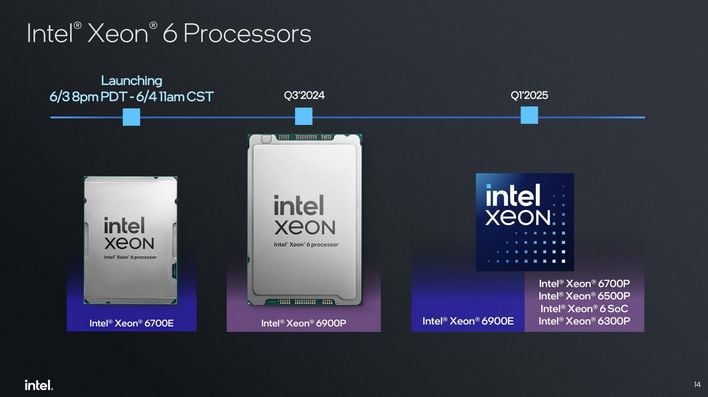
Intel has unveiled its Xeon 6 processors featuring Performance-cores , marking a significant advancement in server consolidation and efficiency. These processors are engineered to deliver top-tier performance across a wide array of data center and network infrastructure workloads, offering unparalleled efficiency for diverse applications.
The Xeon 6 family introduces a simplified naming convention, aiming to streamline product identification for consumers. This lineup includes processors with up to 128 P-cores per CPU, designed to accelerate AI and compute-intensive tasks. Additionally, models equipped with up to 288 Efficient-cores per CPU are optimized for cloud-native and hyperscale workloads, providing a balanced approach to performance and energy efficiency.
In terms of memory capabilities, the Xeon 6 processors support DDR5 memory operating at speeds up to 6.4 GHz. The inclusion of multiplexed rank DIMM technology further enhances memory performance, pushing speeds up to 8.8 GHz. This advancement ensures rapid data access and processing, catering to the demands of modern applications.
The Xeon 6 processors are built on Intel’s “Granite Rapids” architecture, utilizing the Intel 3 manufacturing process. This architecture supports up to 136 PCIe 5.0 lanes and 12 memory channels, providing extensive bandwidth for data-intensive operations. The processors are compatible with the “Birch Stream” platform, ensuring seamless integration into existing data center infrastructures.
Performance benchmarks indicate that the Xeon 6 processors deliver up to 1.5 times better AI inference performance with 33% fewer cores compared to competing processors, such as the AMD EPYC 9755. This efficiency translates to a 5:1 average server consolidation ratio when compared to 2nd Generation Intel Xeon processors, highlighting significant improvements in workload handling and energy consumption.
Intel’s commitment to AI is further demonstrated with the integration of Gaudi 3 AI accelerators in the Xeon 6 lineup. This combination offers enhanced performance per watt and a lower total cost of ownership, making it an attractive solution for enterprises focusing on AI development and deployment.
The introduction of the Xeon 6 processors signifies Intel’s strategic move to regain leadership in the semiconductor industry. After a period of intense competition, these processors position Intel favorably against rivals, offering compelling solutions for both existing and emerging markets.


